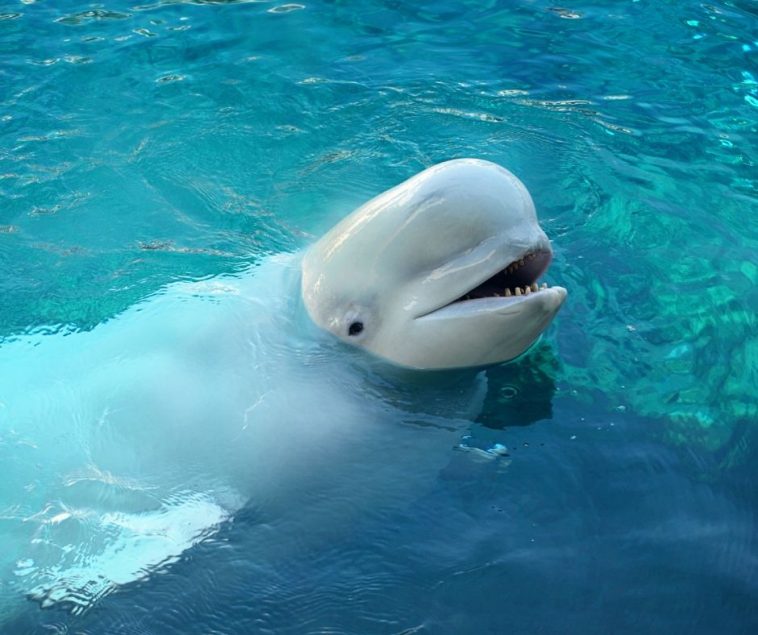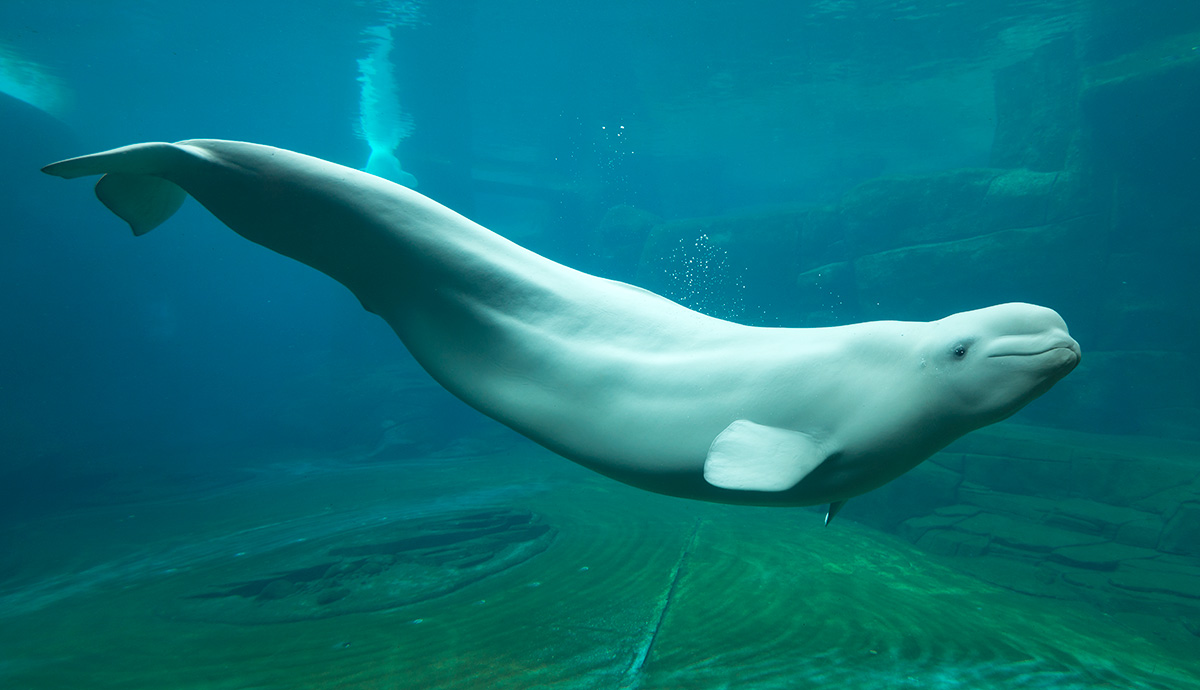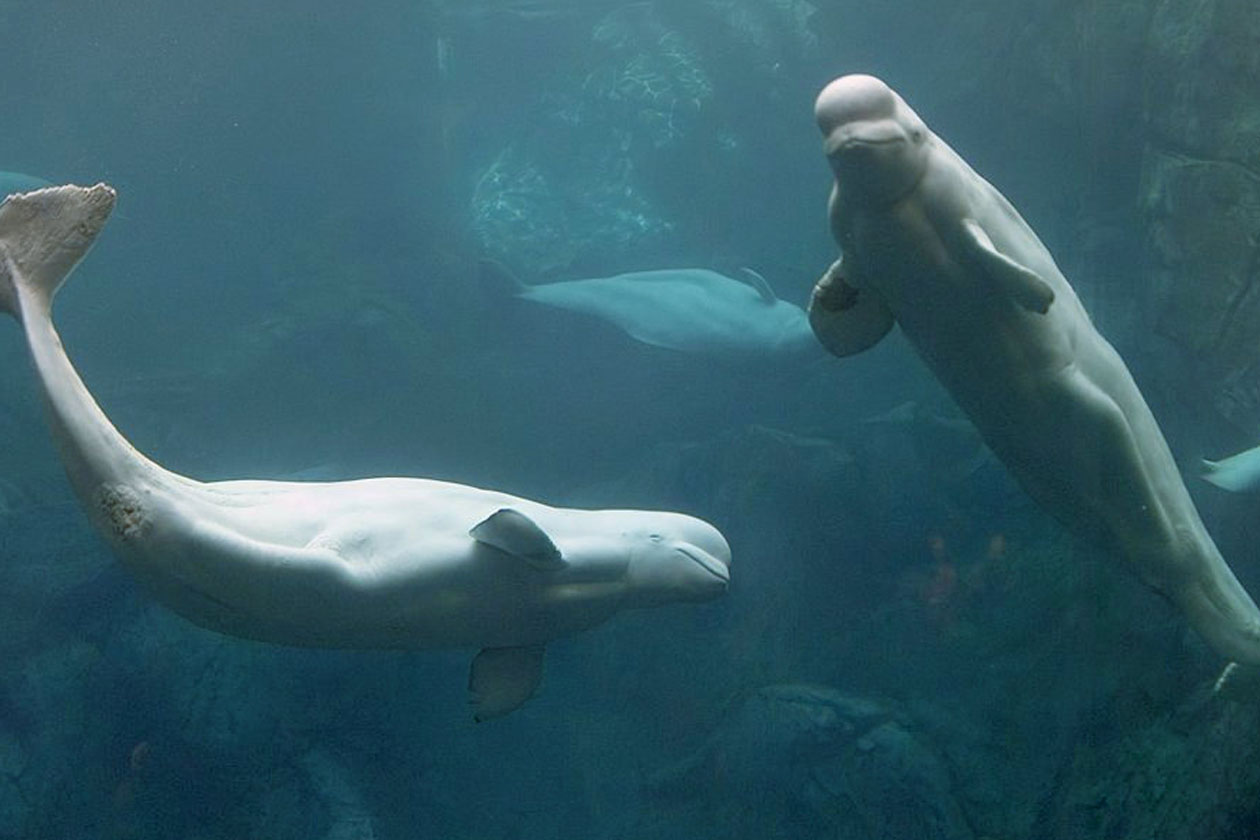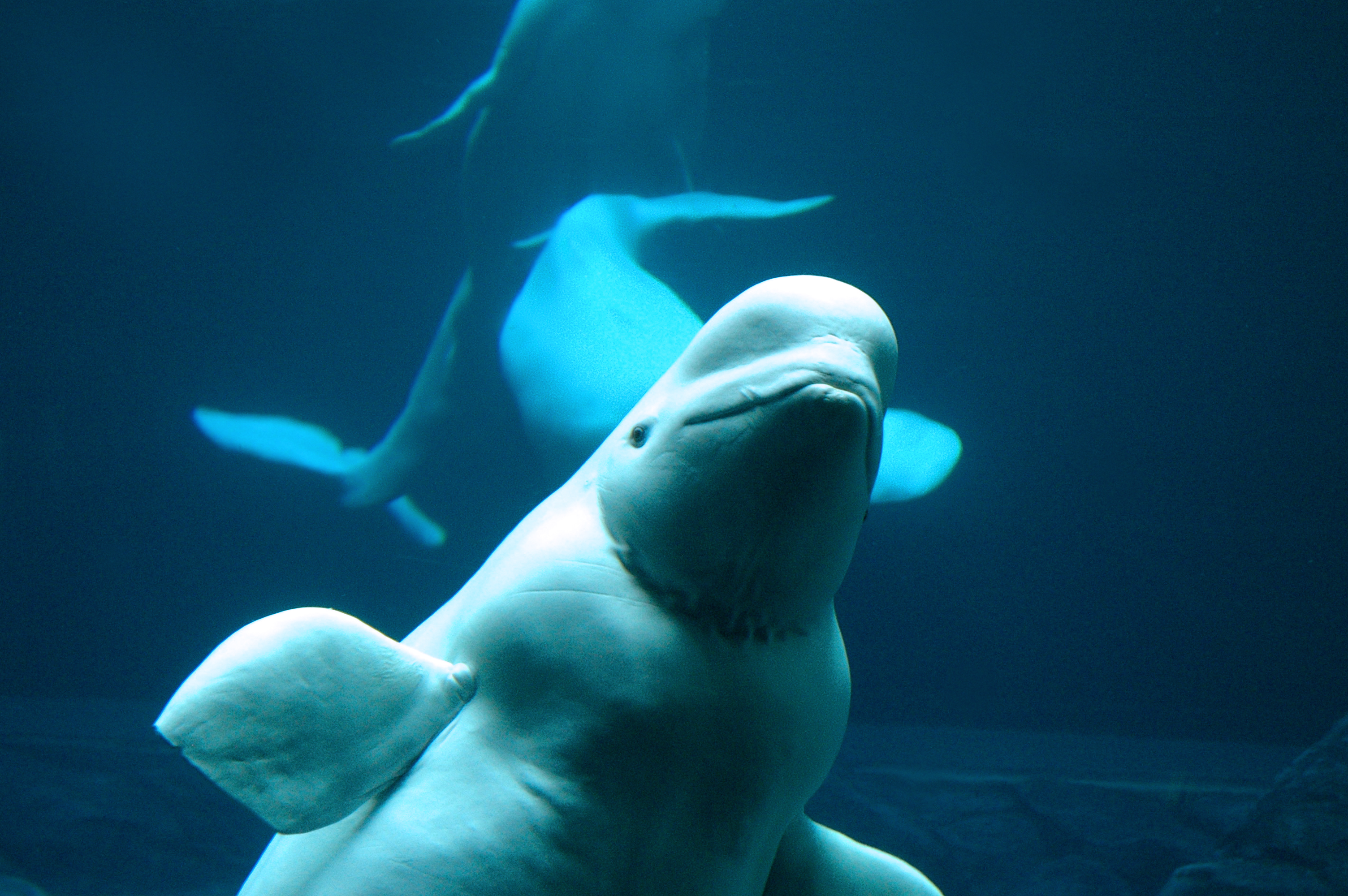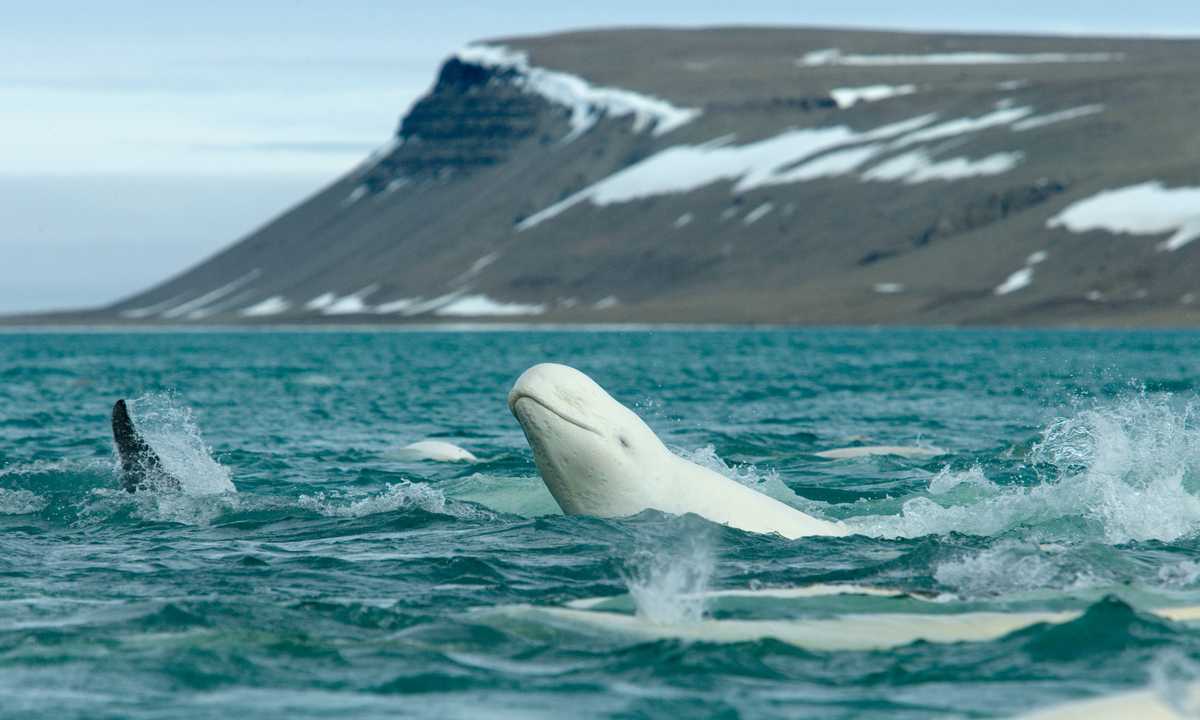STATUS
critically endangered

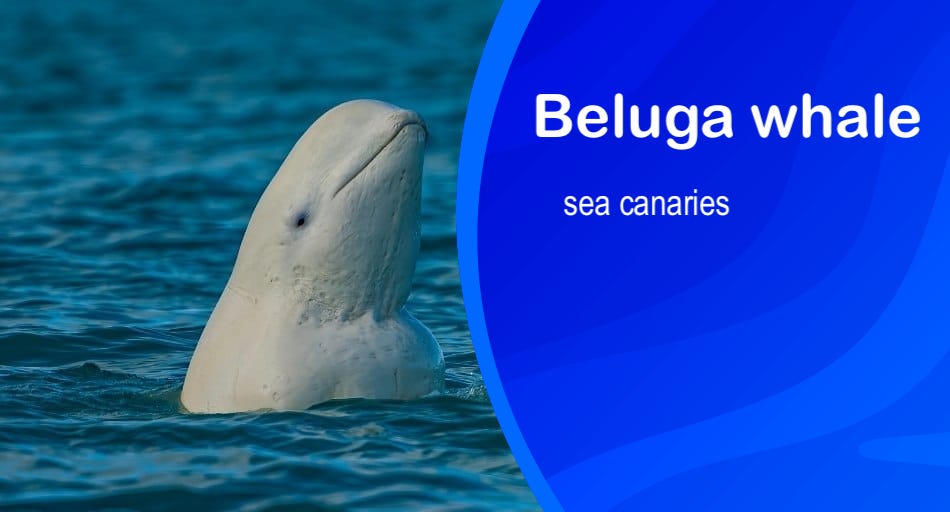
These whales are sized midway between dolphins and "true whales," with an average length of 18 feet long. Their white coloration helps them blend in to their icy environment. Another adaptation for living in sea ice is the loss of their dorsal fin. A dorsal fin would make it more difficult to navigate through icy waters. They also have a large forehead, called a melon, which is used for echolocation.
Belugas are incredibly interesting, vocal, social, and charismatic animals. They have a number of adaptations and behaviors that help them survive.
These whales are found in different locations during different times of year. They migrate seasonally, and calves will learn the migration patterns from their parents. They can be found in Arctic and sub-Arctic seas nearly worldwide.
There are a few populations that are not migratory, and will remain in the same area as residents. Resident whales are common in Cook Inlet, Cumberland Sound, and the Saint Lawrence River.

STATUS
critically endangered

SCIENTIFIC NAME
Delphinapterus leucas

POPULATION
Only 150,000 left

LENGTH
8.5 to 22 feet

WEIGHT
1500-3500 pounds (up to 1.5 tons)

HABITAT
Oceans
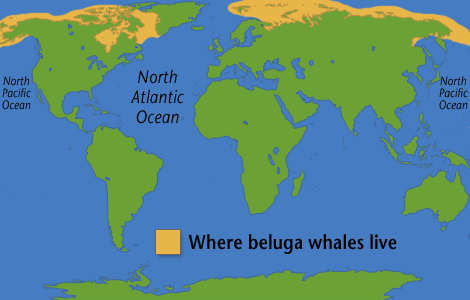
Beluga Whales play an important role in balancing the aquatic food chain and reproduction of other species. As more beluga whales are killed the food distribution in the ocean becomes unbalanced and causes changes in the food supply of many other kinds of marine life.
Belugas have thick, muscular bodies that taper at both ends. Their round heads have a small beak, and their necks are narrower than other whales
These whales are also heavily impacted by overfishing of their prey species. Native people in the Arctic regions have historically hunted belugas, and large numbers can be killed because they migrate in such large groups.
Climate change poses a threat to these cetaceans, especially due to their relationship with the sea ice. Changing temperatures impact the prey species in the Arctic Circle, thus impact belugas.
Belugas are social whales, and are commonly found in large groups depending on their migration patterns. The average group, called a pod, contains 10 animals. Unlike some cetaceans, which remain in a family group for their entire lives, belugas have unstable pods.
